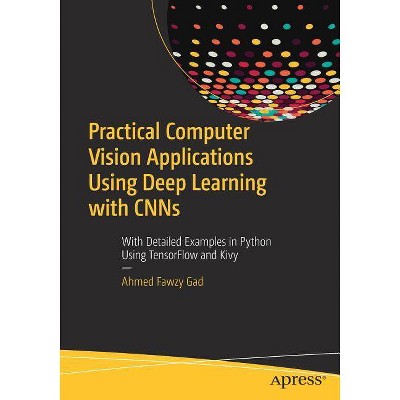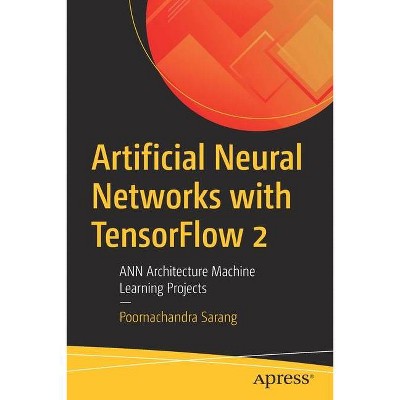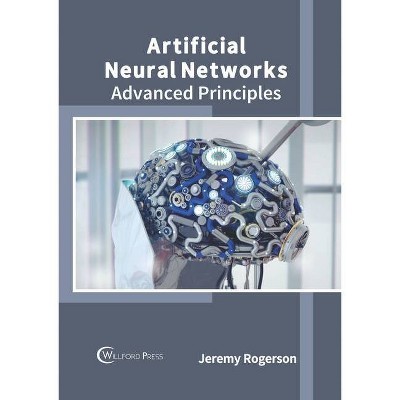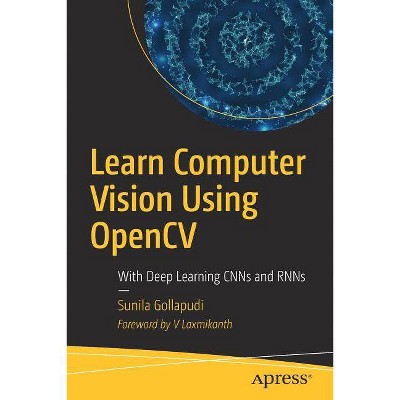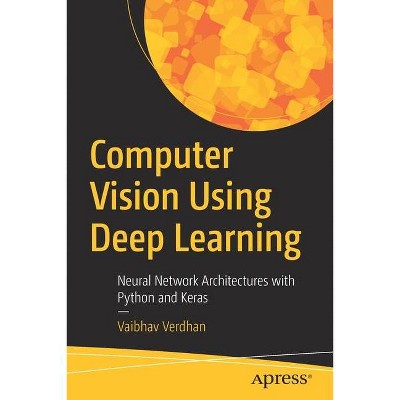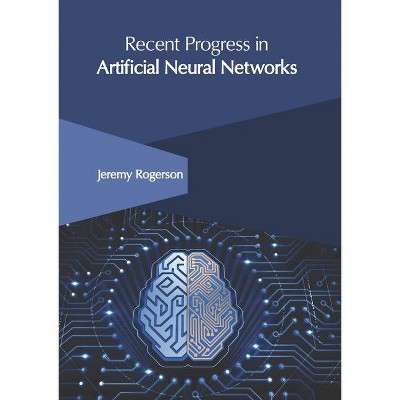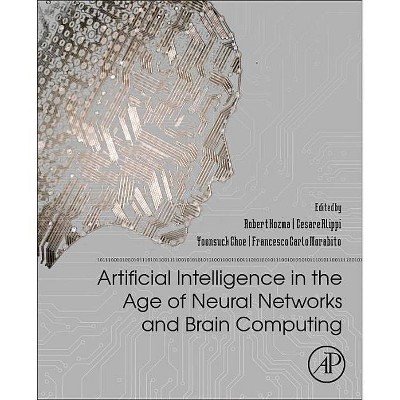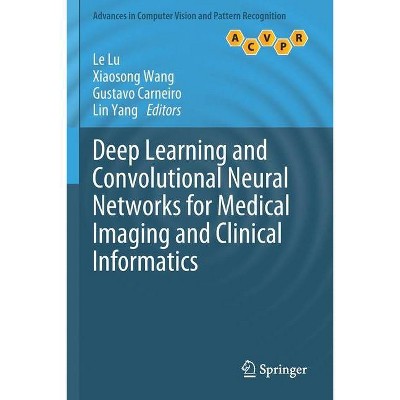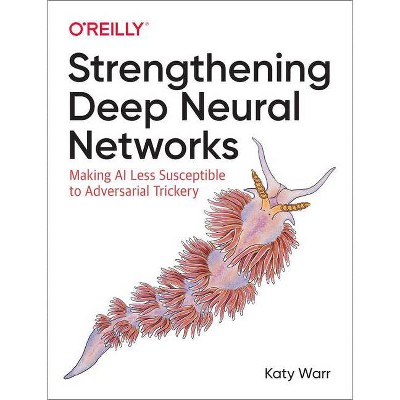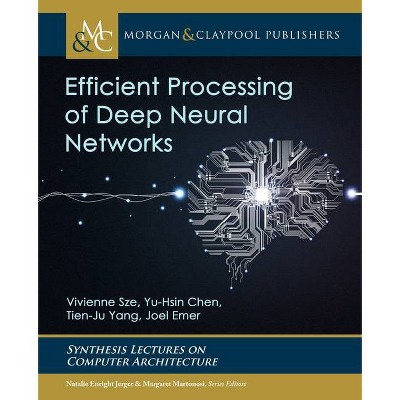Building Computer Vision Applications Using Artificial Neural Networks - by Shamshad Ansari (Paperback)
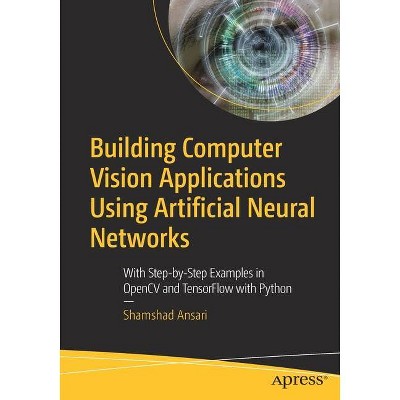
Similar Products
Products of same category from the store
AllProduct info
<p/><br></br><p><b> Book Synopsis </b></p></br></br><p>Apply computer vision and machine learning concepts in developing business and industrial applications using a practical, step-by-step approach. </p> <p>The book comprises four main sections starting with setting up your programming environment and configuring your computer with all the prerequisites to run the code examples. Section 1 covers the basics of image and video processing with code examples of how to manipulate and extract useful information from the images. You will mainly use OpenCV with Python to work with examples in this section. </p> <p>Section 2 describes machine learning and neural network concepts as applied to computer vision. You will learn different algorithms of the neural network, such as convolutional neural network (CNN), region-based convolutional neural network (R-CNN), and YOLO. In this section, you will also learn how to train, tune, and manage neural networks for computer vision. Section 3 provides step-by-step examples of developing business and industrial applications, such as facial recognition in video surveillance and surface defect detection in manufacturing. </p> <p>The final section is about training neural networks involving a large number of images on cloud infrastructure, such as Amazon AWS, Google Cloud Platform, and Microsoft Azure. It walks you through the process of training distributed neural networks for computer vision on GPU-based cloud infrastructure. By the time you finish reading <i>Building Computer Vision Applications Using Artificial Neural Networks</i> and working through the code examples, you will have developed some real-world use cases of computer vision with deep learning. </p> <p><b>What You Will Learn</b><b></b></p> <p>- Employ image processing, manipulation, and feature extraction techniques</p> - Work with various deep learning algorithms for computer vision <p></p> <p>- Train, manage, and tune hyperparameters of CNNs and object detection models, such as R-CNN, SSD, and YOLO</p> <p>- Build neural network models using Keras and TensorFlow</p> <p>- Discover best practices when implementing computer vision applications in business and industry</p> - Train distributed models on GPU-based cloud infrastructure <p></p> <p><b>Who This Book Is For </b></p> <p>Data scientists, analysts, and machine learning and software engineering professionals with Python programming knowledge.</p> <p/><p/><br></br><p><b> From the Back Cover </b></p></br></br><p>Apply computer vision and machine learning concepts in developing business and industrial applications using a practical, step-by-step approach. </p><p>The book comprises four main sections starting with setting up your programming environment and configuring your computer with all the prerequisites to run the code examples. Section 1 covers the basics of image and video processing with code examples of how to manipulate and extract useful information from the images. You will mainly use OpenCV with Python to work with examples in this section. </p><p>Section 2 describes machine learning and neural network concepts as applied to computer vision. You will learn different algorithms of the neural network, such as convolutional neural network (CNN), region-based convolutional neural network (R-CNN), and YOLO. In this section, you will also learn how to train, tune, and manage neural networks for computer vision. Section 3 provides step-by-step examples of developing business and industrial applications, such as facial recognition in video surveillance and surface defect detection in manufacturing. </p><p>The final section is about training neural networks involving a large number of images on cloud infrastructure, such as Amazon AWS, Google Cloud Platform, and Microsoft Azure. It walks you through the process of training distributed neural networks for computer vision on GPU-based cloud infrastructure. By the time you finish reading <i>Building Computer Vision Applications Using Artificial Neural Networks</i> and working through the code examples, you will have developed some real-world use cases of computer vision with deep learning. </p><p>You will: <b></b></p><p>- Employ image processing, manipulation, and feature extraction techniques</p><p>- Work with various deep learning algorithms for computer vision</p><p>- Train, manage, and tune hyperparameters of CNNs and object detection models, such as R-CNN, SSD, and YOLO</p><p>- Build neural network models using Keras and TensorFlow</p><p>- Discover best practices when implementing computer vision applications in business and industry</p><p>- Train distributed models on GPU-based cloud infrastructure </p><p/><br></br><p><b> About the Author </b></p></br></br><p>Shamshad (Sam) Ansari works as President and CEO of Accure Inc, an artificial intelligence automation company that he founded. He has raised Accure from startup to a sustainable business by building a winning team and acquiring customers from across the globe. He has technical expertise in the area of computer vision, machine learning, AI, cognitive science, NLP, and big data. He architected, designed, and developed the Momentum platform that automates AI solution development. He is an inventor and has four US patents in the area of AI and cognitive computing. </p> <p> </p> <p>Shamshad worked as a senior software engineer with IBM, VP of engineering with Orbit Solutions, and as principal architect and director of engineering with Apixio.</p><br>
Price History
Price Archive shows prices from various stores, lets you see history and find the cheapest. There is no actual sale on the website. For all support, inquiry and suggestion messages communication@pricearchive.us
